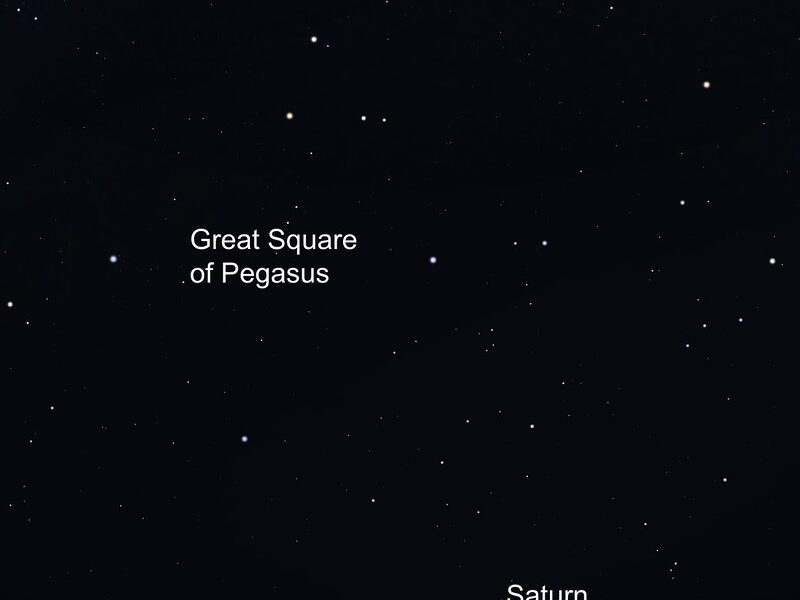Northern Sky – Deane Morrison
This September, the sun isn’t the only bright object dropping in the sky. Venus also follows a steady course downward.
Venus is now a bright beacon low in the eastern predawn sky. On the 1st, Venus, Jupiter and the star Procyon, in Canis Minor, will form a nearly equilateral triangle with Jupiter at the top. And Sirius, in Canis Major, will be lower and to the south. This is another good time to compare Venus, the brightest planet, with Sirius, the brightest star.
But Venus’s orbital motion will soon carry it behind the sun. Don’t miss its show on the 19th. On that morning, Venus, a thin waning moon, and the bright star Regulus, in Leo, the lion, appear in a tight group just above the horizon, like a welcoming party for the sun.
In the evening sky, Saturn stands out among the relatively dim fall constellations. On the 21st, Earth glides between it and the sun, which brings us almost as close as we ever get to Saturn. Look for it low in the southeast to east at nightfall, below the four stars framing the Great Square of Pegasus. The rings are only slightly tilted, so almost all its brightness is due to the planet itself.
September’s full moon rises the evening of Sunday, the 7th. It appears about half an hour before Saturn and leads the planet across the night sky.
This month, the Summer Triangle of bright stars reaches its highest point—or three points—in the south during the early evening hours. The Milky Way runs through the Triangle, adding a special beauty for viewers with or without binoculars.
Fall arrives with the equinox at 1:19 p.m. on the 22nd, the moment the sun crosses the equator heading south. It’s also the moment the Northern Hemisphere’s tilt changes from toward the sun to away from it.
______________________________________________
The University of Minnesota offers public viewings of the night sky at its Duluth and Twin Cities campuses. For more information, see:
Duluth, Marshall W. Alworth Planetarium: www.d.umn.edu/planet
Twin Cities, Minnesota Institute for Astrophysics: www.astro.umn.edu/outreach/pubnight
Check out astronomy programs, free telescope events, and planetarium shows at the
University of Minnesota’s Bell Museum: www.bellmuseum.umn.edu/astronomy
Find U of M astronomers and links to the world of astronomy at: http://www.astro.umn.edu.











